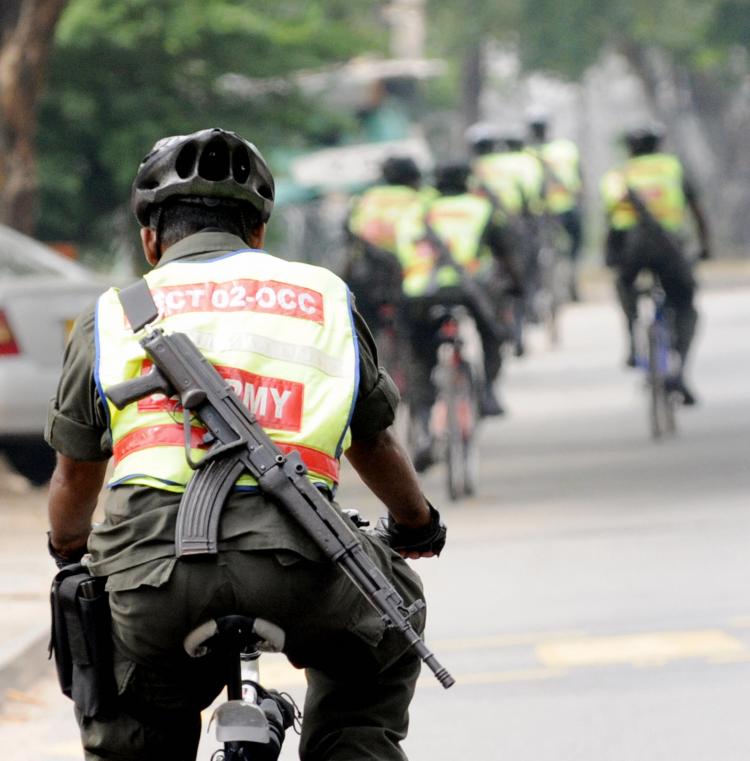The government’s military success has been made possible by a number of factors: the rebellion of the Tigers’ former military commander in the East; more determined leadership from the country’s political and military leaders; improved battlefield strategy and tactics; and international disgust with the LTTE in a post-9/11 world. Still, the military’s success took virtually everyone by surprise and the government is rubbing skeptics’ noses in its achievements with relish.
While the political context in Sri Lanka has clearly been transformed in the past year, significant political challenges to securing a sustainable peace for the long term remain. The Sri Lankan government needs to devise just and practical solutions for enforcing language laws, upholding human rights, and transferring responsibilities to sub-national government. The civil war in Sri Lanka has been a contest for power and control over territory, people, and resources as much as it has been about ‘root causes.’ Nevertheless, progress in addressing grievances must underpin any political solution if the government is to conciliate minority communities and prevent future conflict.
One challenge is how to strengthen sub-national governance. An assumption behind the liberal response to Sri Lanka’s ethnic conflict is that separatism and political extremism can be undermined through power-sharing and devolution to provincial and local councils. The capacity of local government institutions to assume greater authority and responsibility for democratic governance must be strengthened if the government’s solution of “maximum devolution under a unitary state” is to be realized. Negotiating power-sharing between centre and periphery and between the centre and Northern and Eastern Provinces especially is sure to be a drawn-out process, but the government can take steps to give elected councils more to do and the resources to do it with, in the interim.
A long-term approach to making Sri Lanka’s democracy more accountable and responsive to people’s needs and concerns requires strengthening the capacity of local elected bodies to plan, deliver better services, consult the public, and earn more revenue. Our experience working with local government has shown that giving more authority and responsibility to local authorities benefits not just minority communities in the North and East, but people in the South as well. Advances in decentralization in the South, in response to demands for more responsive governance in these areas, will also create space and pressure for similar reforms in the North and East. Politicians from opposite sides of the aisle in local councils are often more willing to work together to get things done than national politicians; they should be empowered to do more.
The end of the war must also be accompanied by a renewed sense of urgency to implement reforms that were placed on the back-burner while war raged. For example, the constitution provides for both Sinhala and Tamil as official languages and sets out a legal framework for allowing citizens to access services in both languages. The Official Languages Act and the Official Languages Commission provide the institutional structure for implementation of the languages policy. Unfortunately, implementation has been painfully slow. Political will is often lacking, and the financial cost involved in implementing a bilingual administration is very high. The government requires assistance to effectively implement Sri Lanka’s official languages policy, including in government institutions responsible for the dispensation of justice. In many cases, lower level court officials and the police, people’s first point of contact with the formal justice system, even in areas which have significant Tamil populations, cannot communicate in Tamil.
A third challenge is to ensure that human rights violations diminish rather than grow in a post-war environment sure to be characterized by continued threats to public security, especially if the LTTE regroups, which the government is determined to prevent. The resumption of war was accompanied by widespread human rights abuses by the state and LTTE. The LTTE is beyond the influence of the international community, so Western countries concentrated their ire on the government, arguing that it has a moral obligation to uphold human rights, whereas a terrorist outfit does not. Pressure on the government has subsequently grown, even from countries that have proscribed the LTTE. The government’s response to what it perceives as international hectoring has been to take a defensive posture, to deny any culpability for human rights violations, and to attack human rights advocates at home and abroad. With the end of the conventional war in sight, however, there is now an opportunity for a de-escalation in the war of words, and rapprochement between the West and the Sri Lankan government, neither of which wants to see state-sponsored violence give terrorism a new lease on life. The government’s National Action Plan for Human Rights, still under development, has the potential to be a point of agreement and the basis for a constructive dialogue, free of finger-pointing between the government and Western countries.
Sri Lanka will hopefully never see such a prolonged season of extreme violence and upheaval again. Violence complicates everything and the opportunity now exists to ratchet it down and heal some of the country’s divisions through a political process. The system of proportional representation adopted in the 1978 Constitution was designed to give minority parties more influence in national politics. Its potential was pre-empted by war; now is the time to give the system another chance.
Nilan Fernando is The Asia Foundation’s Country Representative in Sri Lanka and is based in Colombo. This post first appeared on the Asia Foundation’s blog, In Asia, and the original article may be found here.

